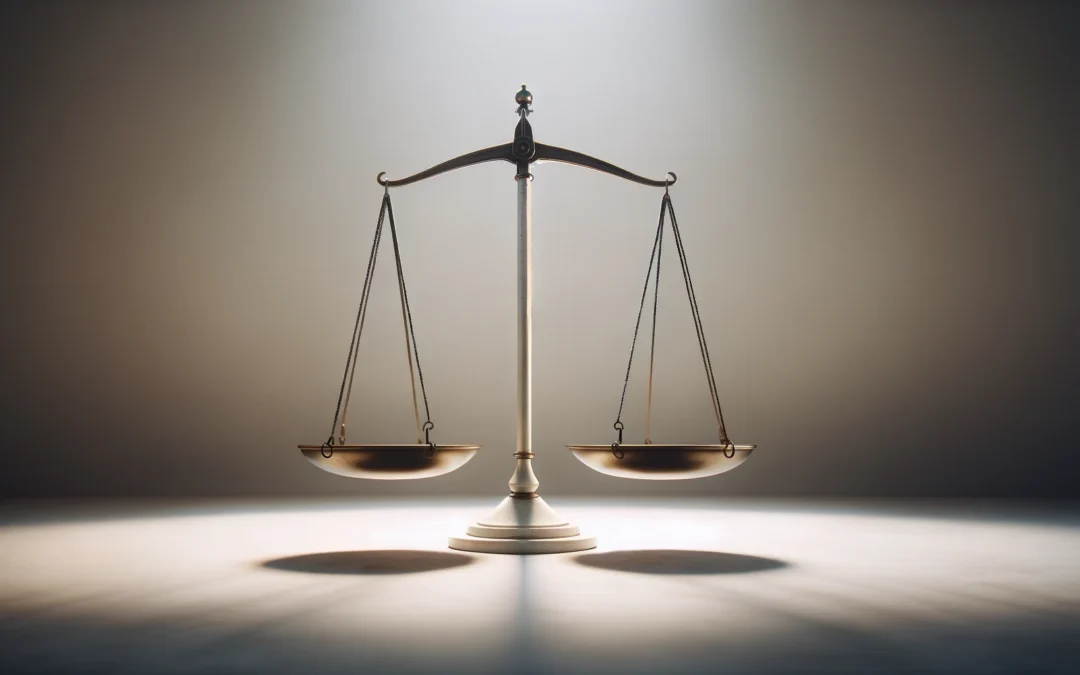Fairness is something we all recognize, whether as children on the playground or as adults at work. It’s about treating people equally and giving everyone a fair chance. But how does fairness actually show up in everyday life?
In this article, we’ll explore 20 real-life examples of fairness. From sharing toys with siblings to ensuring everyone has a voice in meetings, these examples will show how fairness can shape our daily actions. By understanding these scenarios, we can work towards creating a more just and balanced world. Let’s dive in and see how fairness plays out in real life!
What is Fairness?
Fairness is about making decisions without discrimination or bias. It means treating people equally, giving everyone the same opportunities, and holding everyone to the same standards. At its core, fairness is built on the values of justice, equality, and impartiality. It aims to create a level playing field, free from favoritism, personal feelings, or prejudices. Whether in the courtroom, workplace, school, or personal relationships, fairness is key to building trust, cooperation, and social harmony.
Key Examples of Fairness
Fairness plays a very important role in many different contexts, situations, and places. Here are some of the best examples of fairness that should be applied in real life:
1. Equal Pay for Equal Work
Fairness in the workplace means that all employees doing the same job, with the same skills and responsibilities, should receive the same pay. This principle ensures that gender, race, ethnicity, or other personal characteristics do not affect salaries. For example, if two employees are performing the same tasks and producing the same results, they should be compensated equally. Unequal pay for the same work not only demotivates employees but also creates tension and distrust in the workplace. By ensuring equal pay for equal work, employers foster a sense of fairness, which leads to higher job satisfaction, increased loyalty, and a more cohesive team.
2. Fair Grading System
In schools, a fair grading system means that students are evaluated based on their performance, effort, and understanding of the material, not personal biases or favoritism. Teachers should have clear, transparent criteria that outline how grades are earned. For instance, rubrics that describe expectations for assignments help students know what they need to do to succeed. This kind of fairness allows students to see a direct connection between their efforts and results. When grading is clear and consistent, it motivates students to strive for better performance because they know exactly what is expected of them.
3. Access to Healthcare
Fairness in healthcare means that everyone, regardless of income, background, or social status, has access to necessary medical services. This includes not only emergency care but also preventive care like checkups and screenings, as well as ongoing treatment for chronic conditions. Imagine a situation where only wealthy individuals could access life-saving treatments—this would be fundamentally unfair. Fair healthcare ensures that no one is left behind and that all individuals can live healthier lives. Governments and healthcare providers need to work toward reducing barriers like high costs or geographic location to ensure fair access for all.
4. Judicial Fairness
In the legal system, fairness means that everyone is treated equally before the law. This includes having access to legal representation and a fair trial. It ensures that justice is served without bias or favoritism.
5. Fair Play in Sports
Fairness in sports means that all athletes must follow the same rules, and referees must enforce these rules consistently. No player should have an unfair advantage, such as using performance-enhancing drugs or cheating. Fair play promotes respect among athletes and ensures that the competition is based purely on skill, effort, and sportsmanship. For example, in a soccer game, if one team uses underhanded tactics and the referee ignores the rules, it damages the spirit of the sport and can lead to anger and frustration. Fair competition ensures that the best team or individual wins based on merit.
6. Fair Hiring Practices
Employers who follow fair hiring practices evaluate job candidates based on their qualifications, skills, and experience, rather than factors like race, gender, or personal connections. A fair hiring process includes transparent job postings, unbiased interview techniques, and equal opportunity for all applicants. For example, if two candidates with the same qualifications apply for a job, the decision should be made based on their skills and potential contributions to the company, not on subjective factors. Fair hiring practices lead to a more diverse and capable workforce, which benefits the entire organization.
7. Fair Distribution of Resources
In communities, fairness means that resources such as food, clean water, and shelter are distributed equitably. This doesn’t always mean everyone gets the same amount but that everyone gets what they need to survive and thrive. For example, in a drought-stricken area, fairness may require prioritizing water distribution to those most vulnerable, such as children or the elderly. Fair resource distribution helps build stronger, more supportive communities where everyone has the opportunity to meet their basic needs. It fosters solidarity and reduces tensions that arise when resources are distributed unevenly.
8. Fair Representation in Government
Fairness in government means that all groups in society have a voice in the decision-making process. This includes having elected officials who represent the interests and concerns of diverse communities. Fair representation ensures that no group is excluded or marginalized. For example, if a government body consists entirely of representatives from one demographic, it is less likely to make policies that reflect the needs of all citizens. Fair representation leads to more inclusive policies that serve the entire population, promoting social harmony and trust in the political system.
9. Inclusive Education
Fairness in education means ensuring that all students, regardless of their background, abilities, or financial situation, have access to quality education and the resources they need to succeed. For instance, students with disabilities may require special tools or teaching methods, while students from low-income families may need financial aid or additional support. An inclusive education system recognizes these different needs and provides resources accordingly, ensuring that every student has the opportunity to reach their full potential. Schools that promote fairness create a more equal and supportive environment for all learners.
10. Fair Trade Practices
Fair trade ensures that producers, particularly in developing countries, receive a fair price for their goods and are not exploited by larger, wealthier corporations. This helps farmers and workers improve their living conditions and supports sustainable business practices. For example, a fair trade coffee company guarantees that coffee farmers are paid a living wage for their beans, allowing them to invest in their communities and improve their quality of life. Fair trade benefits both producers and consumers by ensuring ethical business practices and creating a more equitable global market.
11. Fair Access to Technology
Fairness in technology means that everyone, regardless of their financial status or location, should have access to digital tools and the internet. This includes affordable devices like computers and smartphones, as well as reliable and affordable internet services. In today’s digital age, access to technology is essential for education, work, and communication. Without it, people are left behind. For example, students without internet access at home may struggle to complete assignments or learn new skills. Bridging the digital divide ensures that everyone can participate fully in modern society, improving opportunities for education, employment, and connection.
12. Fair Treatment of Employees
Employers should treat all employees with respect and fairness. This includes providing safe working conditions and fair wages. It ensures that workers feel valued and motivated.
13. Fair Competition in Business
Fairness in business means companies must compete based on the quality and value of their products or services, not by using unethical or underhanded tactics. This includes avoiding monopolistic practices that prevent smaller companies from entering the market, ensuring all businesses have a fair chance to succeed. For example, if a company uses its size and resources to force competitors out of the market, consumers suffer because they lose choices and prices can rise unfairly. Open, fair markets benefit everyone by driving innovation, improving quality, and ensuring reasonable prices for consumers.
14. Fair Access to Education
Fairness in education ensures that all students, regardless of their economic background, have access to high-quality learning opportunities. This can include providing scholarships, grants, or financial aid to students who need it, so that economic barriers don’t prevent them from pursuing education. For example, a student from a low-income family should have the same chance to attend college as a student from a wealthier background. When everyone has an equal chance to learn and grow, society benefits because education is one of the strongest tools for reducing inequality and promoting long-term success.
15. Fair Housing
Fairness in housing means everyone has the right to safe, affordable housing, free from discrimination. This includes ensuring that people of all races, ethnicities, genders, and economic backgrounds have equal access to rental properties or homeownership opportunities. Fair housing practices ensure that everyone has a place to live that meets their needs, contributing to more inclusive, diverse, and supportive communities.
16. Fair Treatment in the Media
Fairness in the media involves providing balanced, unbiased information to the public. Media outlets should represent a wide range of perspectives and avoid favoring one side of a story. For example, in political reporting, a fair media source would give voice to different viewpoints without showing bias toward one party or group. This fairness is crucial because the media shapes public opinion and helps people make informed decisions. By ensuring accurate and diverse coverage, media outlets build trust with their audience and promote informed discussions in society.
17. Environmental Fairness
Environmental fairness means ensuring that all communities have access to clean air, water, and land, regardless of where they live or their economic status. It includes enforcing environmental regulations that prevent pollution and protecting natural resources for future generations. For example, low-income or minority communities are often disproportionately affected by pollution or industrial waste, while wealthier areas are better protected. Environmental fairness aims to stop this injustice by ensuring that no group bears a greater burden of environmental harm. It promotes healthy living conditions for everyone and protects the planet for the future.
18. Fair Credit Practices
Fairness in lending ensures that everyone has equal access to credit based on their financial ability to repay, not based on factors like race, gender, or background. This means financial institutions should assess creditworthiness fairly and offer loans at reasonable rates. For example, if two individuals have similar incomes and credit histories, they should receive similar loan terms, regardless of their personal characteristics. Fair lending practices open up financial opportunities, such as home ownership or starting a business, to more people, contributing to economic equality and personal financial growth.
19. Fair Use of Public Funds
Fairness in the use of public funds means that taxpayer money should be spent in ways that benefit the public as a whole. Governments should allocate resources transparently and ensure that spending supports the needs of all citizens, not just select groups. For example, using public funds to build parks, schools, and roads in all neighborhoods—rather than focusing only on wealthier areas—ensures that everyone enjoys the benefits of public investment. Transparent, fair spending fosters trust in government and ensures that public resources are used to improve society for everyone.
20. Fairness in Relationships
Fairness in personal relationships means treating each other with respect and equality. This involves sharing responsibilities, communicating openly, and making decisions together. For example, in a marriage or partnership, both people should have a say in major decisions, and household duties should be divided fairly, based on abilities and time, not traditional gender roles. When fairness is present in relationships, it fosters trust, mutual respect, and long-term satisfaction. Fairness helps create a balanced, healthy dynamic where both partners feel valued and supported.
Types of Fairness: Procedural vs. Distributive Fairness
Fairness can be broken down into two main types: procedural fairness and distributive fairness. Both play vital roles in ensuring justice and equality in everyday life.
Procedural fairness focuses on how decisions are made. It’s about following clear, consistent rules and making sure the process is open and honest. For example, if a teacher grades students using the same standards for everyone, that’s procedural fairness. Everyone knows what to expect, and there are no hidden advantages. When people feel the process is fair, they are more likely to accept the outcomes, even if they don’t get the result they wanted.
On the other hand, distributive fairness is about the results or outcomes. It asks whether resources, rewards, or responsibilities are divided fairly. For instance, in a workplace, distributive fairness means everyone gets paid based on their work and effort, not on favoritism or bias. It’s about making sure everyone gets their fair share.
Both forms of fairness matter. You can have a fair process (procedural fairness), but if the outcome is unfair (distributive fairness), people may still feel wronged. Imagine a company that holds an open job interview process but always hires people from one group. The process is fair, but the outcome isn’t. Conversely, you can have an unfair process, like biased judging in a contest, even if the final reward is evenly distributed.
In daily life, we often experience both types of fairness. Whether it’s a family decision, school rule, or workplace policy, fairness helps build trust and respect. When decisions are made transparently and resources are shared justly, everyone benefits.
Fairness in Decision-Making Processes
Fairness in decision-making processes is crucial for maintaining trust and legitimacy in any organization or institution. When decisions are made fairly, it ensures that all individuals involved have equal opportunities and are judged based on consistent criteria. This can apply to various contexts, such as hiring practices, legal judgments, or even everyday decisions within a family or community.
A key component of fairness in decision-making is transparency. Decision-makers must clearly communicate the criteria and processes they use. This transparency helps to prevent any perceptions of bias and allows stakeholders to understand why certain decisions were made. Additionally, involving a diverse group of people in the decision-making process can help to mitigate unconscious biases and promote a more balanced perspective.
Moreover, fairness in decision-making often requires the implementation of checks and balances. This means having mechanisms in place to review and, if necessary, correct decisions that may have been influenced by unfair factors. For instance, an appeals process in a legal context allows individuals to challenge decisions they believe to be unjust.
In summary, fairness in decision-making is about ensuring that all individuals are treated equally and that decisions are made based on clear, consistent, and transparent criteria. This not only fosters trust but also upholds the integrity of the decision-making body.
Fairness in Resource Allocation
Fairness in resource allocation is another critical aspect of the broader concept of fairness. This refers to the equitable distribution of resources, such as money, time, or opportunities, among individuals or groups. Ensuring fairness in this area is essential for promoting social justice and reducing disparities.
One widely discussed approach to fair resource allocation is the principle of equity. Unlike equality, which means giving everyone the same amount, equity takes into account the specific needs and circumstances of different individuals or groups. For example, in education, equity might mean providing more resources to underfunded schools to level the playing field.
Another important concept in resource allocation is the idea of meritocracy, where resources are distributed based on individual merit or contribution. While this can promote motivation and reward hard work, it is crucial to ensure that the initial conditions are fair. Without a level playing field to begin with, meritocratic systems can exacerbate existing inequalities.
In practice, achieving fairness in resource allocation often involves a combination of policies and interventions. Governments and organizations may implement affirmative action programs, progressive taxation, or targeted funding to ensure that resources are distributed in a way that addresses both current and historical inequities.
In conclusion, fairness in resource allocation is about distributing resources in a way that considers both the needs and contributions of different individuals or groups. By doing so, it helps to promote social justice and reduce inequalities in society.
Fairness in Education
Fairness in education remains a hot topic. Many wonder, “What makes an educational system fair?” This question seeks to understand if all students receive equal opportunities. Fairness in education means providing the same learning resources and support to every student. It involves recognizing individual needs and addressing them. For instance, students with disabilities might need extra tools for learning. Ensuring they have access to these tools is a step toward fairness.
Another aspect is eliminating bias in teaching materials. Textbooks and resources should reflect diverse cultures and perspectives. This helps in creating an inclusive environment. Teachers also play a crucial role. They must be trained to treat all students equitably. They should encourage every student, regardless of background or abilities.
Lastly, fairness in education includes fair assessment methods. Standardized tests often don’t consider varying learning styles. Alternative assessments can provide a more accurate picture of a student’s abilities. The goal is to create a system where everyone has a fair shot at success.
Fairness in Employment
Fairness in employment is vital for a healthy workplace. Many search for “how to ensure fairness at work?” This involves equal treatment of all employees. It starts with the hiring process. Recruiters should focus on skills and qualifications, not irrelevant factors like gender or race.
Once hired, employees should have equal access to opportunities. This includes promotions, raises, and professional development. Companies must build policies that prevent discrimination. These policies should be clear and enforced consistently.
Workplace fairness also covers pay equity. Employees doing the same job should receive the same pay. Gender and racial pay gaps are still issues in many places. Companies need to regularly review their pay structures to ensure equity.
Moreover, fairness extends to workplace culture. Everyone should feel valued and respected. Open communication channels help in addressing grievances. When employees believe they are treated fairly, they are more engaged and productive. Thus, fairness in employment benefits both workers and employers.
Read also: Top 30 Transparency Examples & Definition
The Most Popular on BitGlint

Zesty: 30 Examples & Definition and Meaning
Zestiness brings energy, excitement, and bold flavor to life. Whether in food, personality traits, or activities,...

20 Best Examples of Hope & Definition
In today's fast-paced world, hope serves as a beacon, guiding us through challenging times and towards brighter days....

30 Disappointment Examples & Definition
Disappointment is an emotional response we all experience when our hopes, expectations, or desires aren't met. It's...

20 Examples of Secondary Consumers in the Food Chain
Secondary consumers are animals that eat other animals—usually herbivores that feed on plants. They’re an important...

40 Social Dilemma Examples in the World & Real Life
Social dilemmas are everywhere. They shape the choices we make at work, in our communities, and even on a global...

20 Chronology Examples & Meaning
Chronology is something we use more than we realize. It shows up in conversations, in how we remember the past, and in...

30 Respect Examples & Definition
Respect is one of the foundation stones of healthy relationships and functioning societies. It involves showing...
Get Inspired with BitGlint

